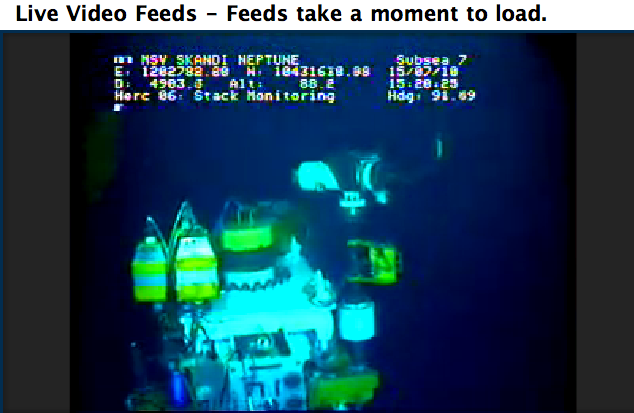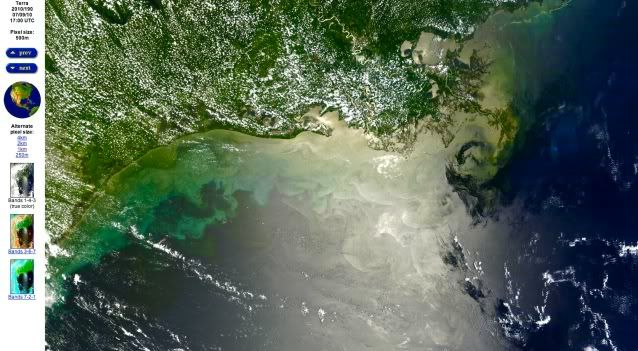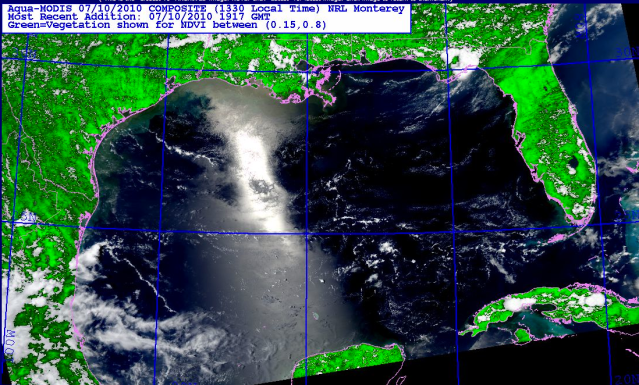BP is claiming the oil well has been successfully shut off for now during this pressure test.
If you pray, pray.
I’ll add more in a minute. Staring at webcams.
Pressure will build up quickly, so they may turn it back on to release pressure so things don’t go to hell suddenly.
This is unlikely to stay the same status for much over an hour, at the most.
fastest webcam captures
http://www.occupantunknown.com…
update 1. Well monitoring is taking place. So far, pressure steady. A sudden drop indicates a breach somewhere and they would re open valves to let oil flow out rather than blow a hole somewhere else in the well, equipment, or well bore.
Update from twitter:
http://twitter.com/Oil_Spill_2010Update: NO OIL FLOWING INTO THE GULF #oilspill
7 minutes ago via HootSuiteNew well cap would allow oil flow regulation in case of hurricane – Adm. Allen #oilspill
about 5 hours ago via HootSuiteWe were no happy with the redundancy in BP equipment, asked for more – Adm. Allen #oillspill
about 5 hours ago via HootSuiteWill drill relief wells about 10 feet at a time, pause for testing each time – Adm. Allen #oilspill
about 5 hours ago via HootSuiteRelief well about 100 feet above proposed intersection point – Adm. Allen #oilspill
about 5 hours ago via HootSuiteIntegrity test will inform how we’re going to perform relief well digs – Adm. Allen
about 5 hours ago via HootSuiteIntegrity test also important in predicting relief wells’ success – Adm. Allen #oilspill
about 5 hours ago via HootSuiteMuch of equipment has been designed and engineered for the first time – Adm. Allen #oilspill
about 5 hours ago via HootSuiteWe don’t think there’s a problem with well bore – Adm. Allen #oilspill
about 5 hours ago via HootSuiteConsistent low pressure reading would indicate leak, stop testing again – Adm. Allen #oilspill
about 5 hours ago via HootSuiteTest scheduled to run for 48 hours, in 6-hour increments – Adm. Allen #oilspill
about 5 hours ago via HootSuiteWe are ready now to restart integrity testing – Adm. Allen
about 5 hours ago via HootSuite
apparently the last thing they shut off was blowing quite a bit of plume out nearer the bottom and that was pretty spectacular in appearance, I had thought something popped off somewhere as I had watched.
Government live video feeds here.
http://ht.ly/2c5CJ
webcams:
bird cleaning station
skandi rov 1 leak monitoring
skandi rov 2 leak monitoring
olympic rov2 leak monitoring
update 2 here’s a screengrab picture I just took of skandi cam looking at the top of the ram stack.

The top of the new cap and stack. Thurs July 15, 2010, 1:20 pm PDT. No leaks. Oil has been stopped from leaking during this pressure test . Skandi Rov cam was swimming around stack taking different views.




 After a video was released on June 13th recorded from BP’s underwater
After a video was released on June 13th recorded from BP’s underwater